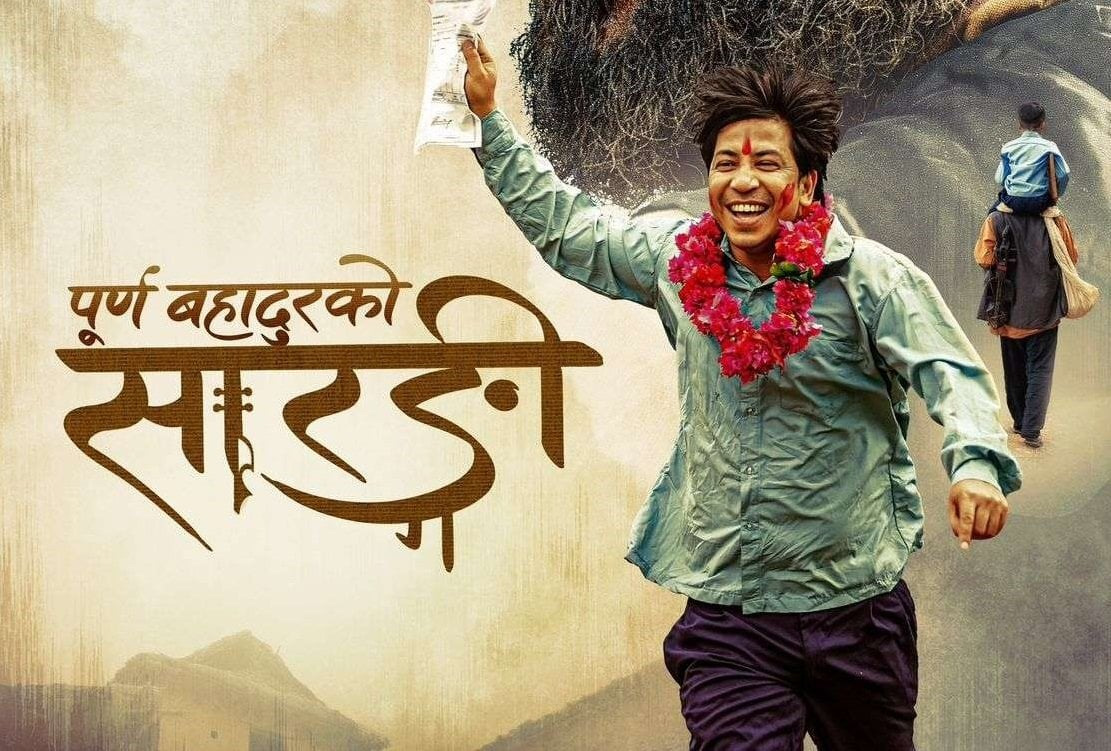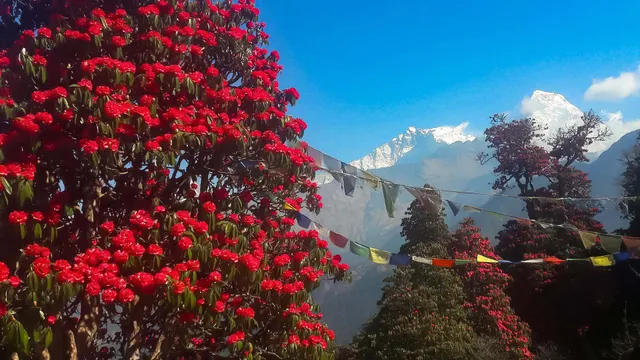Movie Review( Plot and Storyline, Performance, Themes and social commentary)
Sarangi (also known as Purna Bahadur Ko Sarangi) is a Nepali drama film that captures the lives of people belonging to the Gandharva community, an ethnic group known for their traditional music, especially playing the sarangi, a stringed instrument. The film explores themes of love, sacrifice, caste struggles, and the pursuit of dignity through the lens of one man’s journey in a deeply conservative and stratified society.
Plot and Storyline
The story of Sarangi revolves around Purna Bahadur, a young man born into the Gandharva community, who makes his living by playing the sarangi on the streets, offering his music in exchange for small amounts of money. The film opens with his simple, humble life, showing how his community struggles to break free from social and economic hardships. Purna's life takes a significant turn when he falls in love with a girl from a higher caste, and he faces immense opposition from society because of his lower social status.
Through Purna's journey, the movie delves into themes of caste-based discrimination, social exclusion, and the desire for upward mobility. His passion for music, while being a means of survival, is also his connection to his heritage. However, his love story is complicated by societal expectations, and he must navigate the harsh realities of living in a world that judges him for his birth rather than his character or talents.
The film effectively highlights the emotional and physical struggles of the Gandharva people, who are often marginalized due to their traditional occupation of music-making. Their life is not just about playing instruments but also about dealing with social prejudice and attempting to rise above their circumstances, all while holding on to their cultural identity.
Performances
The strength of Sarangi lies in its performances, particularly the portrayal of the protagonist Purna Bahadur. The actor delivers a heartfelt and powerful performance, capturing Purna’s emotional conflict, his love for music, and his desire for respect. His portrayal of the internal battle between tradition and modernity, love and duty, adds depth to the character and engages the audience.
Supporting characters, too, deliver strong performances, with each actor bringing life to the diverse community surrounding Purna. From his family to the antagonistic forces in the film, the characters are well-written and help propel the story forward. The chemistry between Purna and his love interest is convincing and helps drive the emotional core of the film.
Direction and Cinematography
Director Aayushman Joshi does an excellent job of telling a story that is both personal and universal. He effectively uses the landscape of Nepal, showcasing its rural beauty and vibrant culture, but also the more somber and gritty aspects of life in a lower-income community. The cinematography captures the essence of Purna's world with intimate shots that convey the emotional weight of the narrative. The natural beauty of the surroundings contrasts sharply with the hardships faced by the characters, adding a layer of symbolism to the film.
The direction stays true to the film’s social message while allowing the story to unfold in a way that feels both intimate and engaging. The pacing of the film, however, has drawn some mixed reactions. While some appreciate the slow, meditative nature of the narrative, others feel that the story could have been trimmed down, as certain scenes may feel drawn-out at times. However, this slow pacing also serves to emphasize the struggles faced by the character and provides the audience with enough time to connect with the emotional depth of the film.
Music and Soundtrack
As a film centered around music, the soundtrack plays an essential role in establishing the film's tone. The music, predominantly featuring the sarangi, is beautiful and deeply emotional. The haunting sound of the instrument is not only a symbol of Purna's profession but also a metaphor for his struggle—both beautiful and painful at the same time. The music amplifies the film's emotional moments and helps convey the underlying sadness of the protagonist’s journey.
The songs complement the narrative perfectly and provide an immersive experience, especially for viewers unfamiliar with the sarangi and its role in Nepali culture. The incorporation of traditional melodies enhances the film's cultural authenticity.
Themes and Social Commentary
Sarangi offers an insightful commentary on the social and cultural issues faced by marginalized communities in Nepal. At its core, the film is about the pursuit of dignity in the face of social injustice. The film highlights the difficulties faced by people who, by virtue of their caste or profession, are often looked down upon by society. Through Purna’s story, the film critiques the deeply ingrained caste system and calls for greater equality, social acceptance, and empathy.
Moreover, the film beautifully explores the concept of love that transcends social boundaries. The love story between Purna and his upper-caste love interest represents the possibility of breaking barriers, but also the painful realization that love alone cannot always overcome societal prejudices. This adds a tragic element to the narrative, making it more poignant and relatable.
Final Thoughts
Sarangi is a film that resonates with its audiences through its emotional storytelling, cultural richness, and thought-provoking social commentary. It is a story of love, struggle, and survival in a world that often overlooks the human value of those from lower castes. While the film has its flaws—particularly in pacing—it succeeds in delivering a powerful message about the importance of self-respect, love, and the courage to challenge social norms.
For those interested in Nepali cinema and stories that tackle social issues, Sarangi is a compelling watch. It is a poignant reminder of how deeply rooted social systems can impact the lives of individuals, yet also a story of hope and resilience in the face of adversity.
Read also:




Comments
Post a Comment